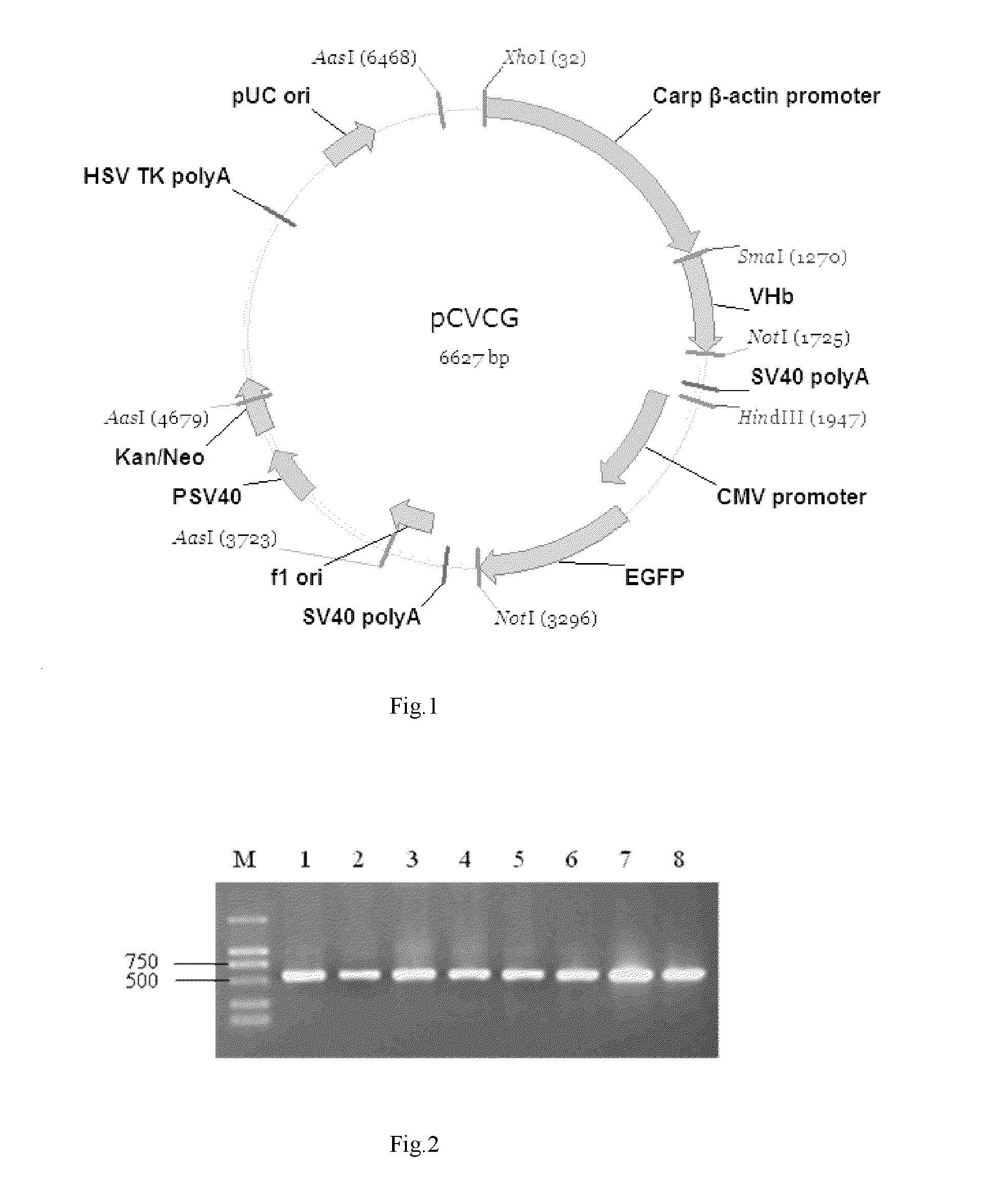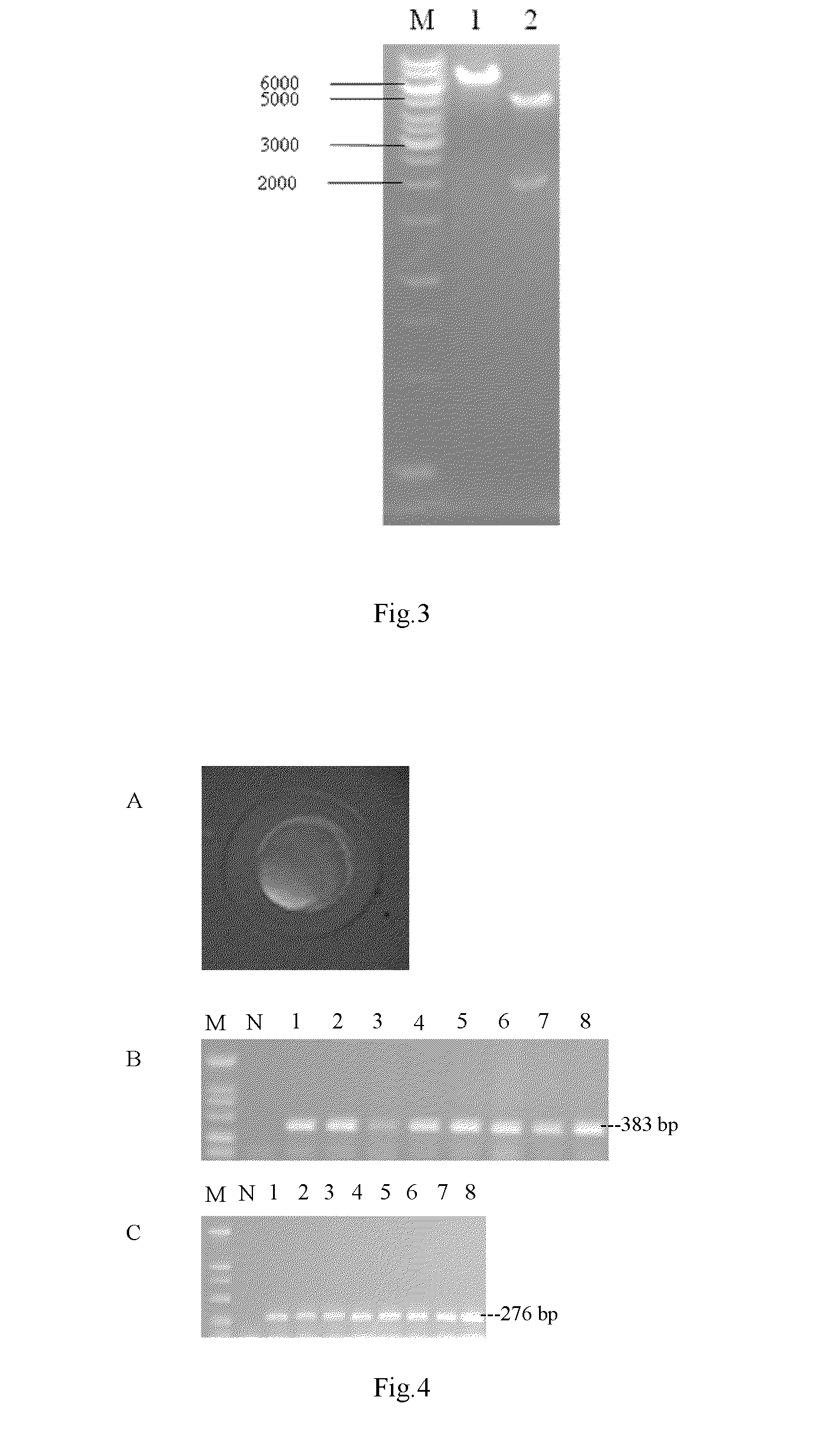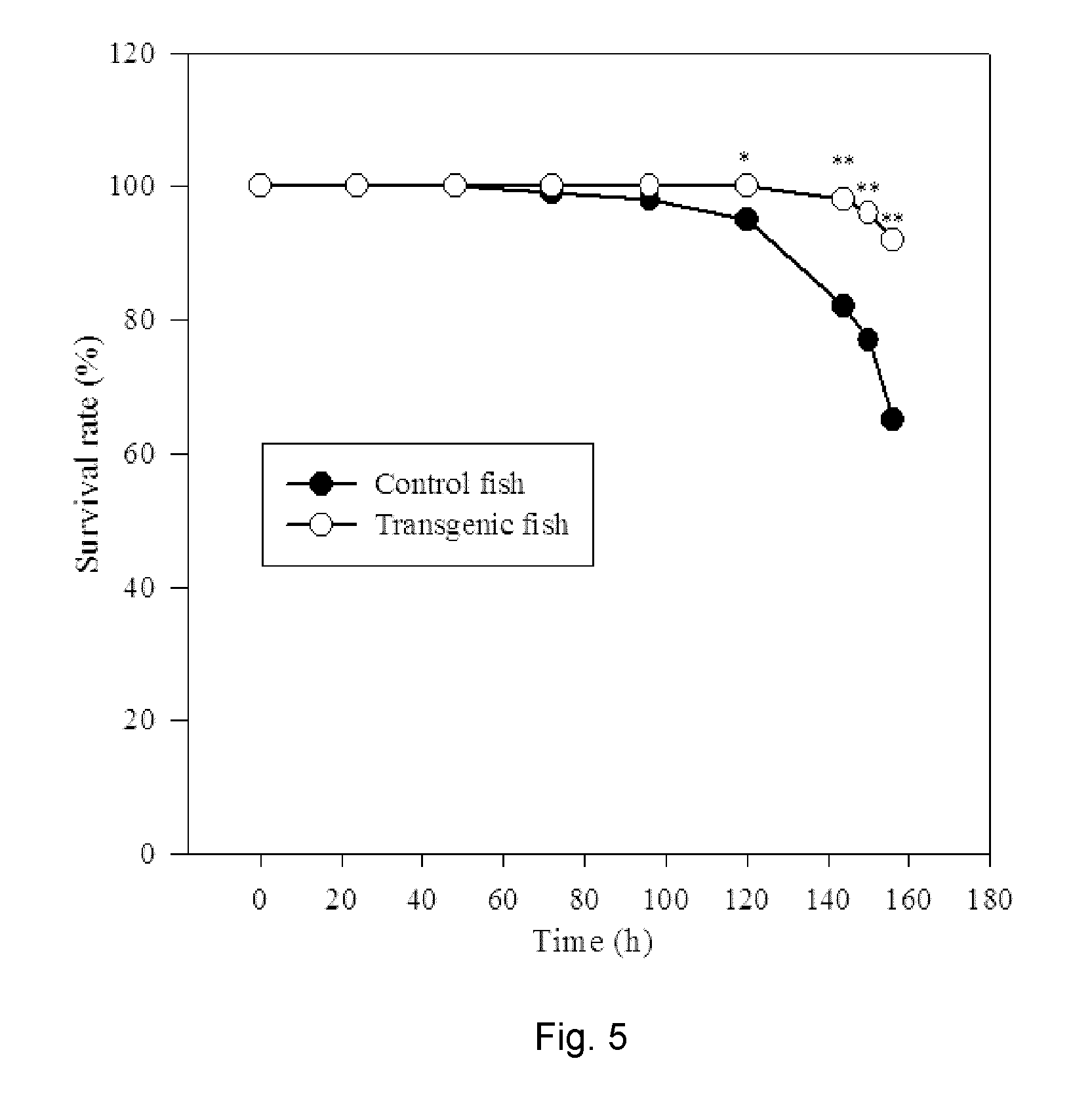Recombinant gene which enhances the ability of fish to tolerate low dissolved oxygen stress and the use thereof
- Summary
- Abstract
- Description
- Claims
- Application Information
AI Technical Summary
Benefits of technology
Problems solved by technology
Method used
Image
Examples
example 1
Construction of pCVCG, The Expression Vector Containing Vitreoscilla Hemoglobin Gene
[0027]In the expression vector of Vitreoscilla hemoglobin gene, carp actin gene promoter with a length of 1213 bp was used as a promoter (SEQ ID NO: 1, which was screened from the genomic bank of carps, a conventional protocol, Molecular Cloning A Laboratory Mannual, 2nd ed., Sambrook, J. et al. Science Press, 1993). Vitreoscilla hemoglobin gene with a length of 441 bp, as a target gene (SEQ ID NO: 2, which was cloned from Vitreoscilla stercoraria commercially purchased from ATCC Center, USA, with the ATCC number 15128. The 5′ upstream primer was CCATGGTAGA CCAGCAACC (SEQ ID NO: 6), and the 3′ downstream primer was GGGTAACCTT TATTCAACCG (SEQ ID NO: 7). PCR condition was shown as follows: pre-denaturalizing at 94° C. for 10 min; 25 cycles of denaturalizing at 94° C. for 30 sec, annealing at 52° C. for 45 sec, extending at 72° C. for 45 sec; then 72° C. for 7 min. The amplified fragments with a length ...
example 2
The Use of a Recombinant Gene Enhancing the Ability of Fish to Tolerate Low do Stress in Modeling Organism Zebrafish (Danio Rerio), Comprising the Following Steps
(1) Preparation of Transgenic Zebrafish
[0033]Zebrafish AB strain was used. The plasmid DNA was extracted from the expression vector pCVCG containing Vitreoscilla hemoglobin gene using the Plasmid Miniprep kit (Axygen) and dissolved in ST solution (88 mmol / l NaCl, 10 mmol / l Tris-HCl, pH 7.5) to a final concentration of 85 ng / μl. Then the DNA solution was microinjected (Zhu Z, Li G, He L, et al. Novel gene transfer into the fertilized eggs of goldfish (Carassius auratus L. 1758). Z angew Ichthyol, 1985, 1:31-34) into the animal poles of zebrafish zygotes before the first cleavage. The DNA injection dose was 1-2 nl / zygote. The resultant zygotes were incubated and bred in 28.5° C. water.
(2) Breeding and Screening of the Transgenic Zebrafish Family which Stably Inheriting and Expressing the VHb Gene
[0034]After vector pCVCG was i...
example 3
The Use of a Recombinant Gene Enhancing the Ability of Fish to Tolerate Low do Stress to Genetically Improve an Economically Farmed Species, Comprising the Following Steps
(1) Preparation of Transgenic Blunt Snout Bream and Common Carp
[0040]The important economically farmed species in China, i.e., blunt snout bream and common carp were used for preparing vhb transgenic fish. The plasmid DNA was extracted from the expression vector pCVCG containing Vitreoscilla hemoglobin gene using the Plasmid Miniprep kit (Axygen) and dissolved in ST solution (88 mmol / l NaCl, 10 mmol / l Tris-HCl, pH 7.5) to a final concentration of 85 ng / μl. Then the DNA extraction solution was microinjected (Zhu Z, Li G, He L, et al. Novel gene transfer into the fertilized eggs of goldfish (Carassius auratus L. 1758). Z angew Ichthyol, 1985, 1:31-34) into the animal poles of zygotes of blunt snout bream (common carp) before the first cleavage. The DNA injection dose was 1-2 nl / zygote. The resultant zygotes were incu...
PUM
| Property | Measurement | Unit |
|---|---|---|
| Stress optical coefficient | aaaaa | aaaaa |
Abstract
Description
Claims
Application Information
 Login to View More
Login to View More - R&D
- Intellectual Property
- Life Sciences
- Materials
- Tech Scout
- Unparalleled Data Quality
- Higher Quality Content
- 60% Fewer Hallucinations
Browse by: Latest US Patents, China's latest patents, Technical Efficacy Thesaurus, Application Domain, Technology Topic, Popular Technical Reports.
© 2025 PatSnap. All rights reserved.Legal|Privacy policy|Modern Slavery Act Transparency Statement|Sitemap|About US| Contact US: help@patsnap.com



